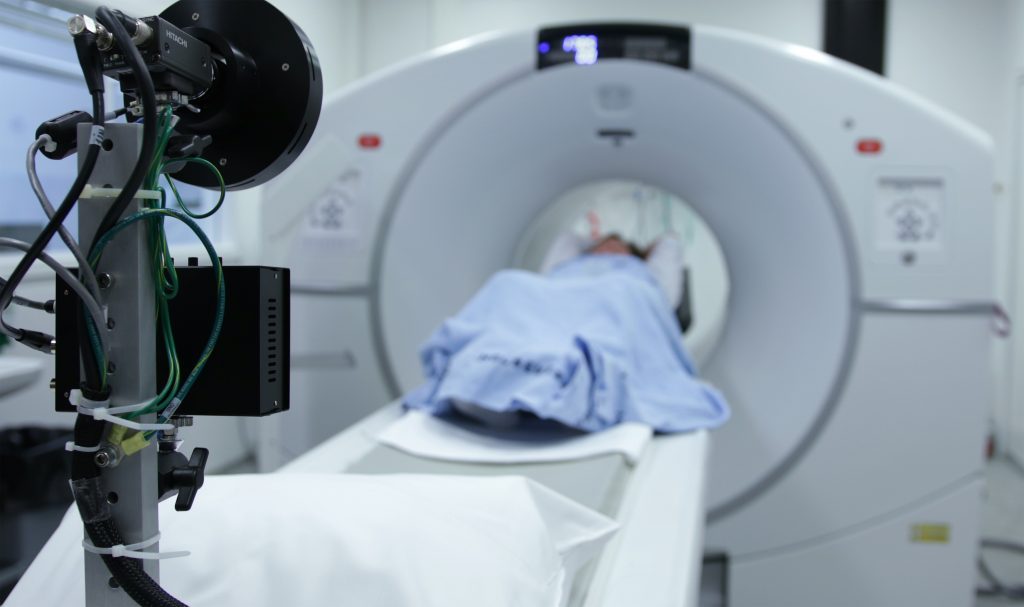
A linear accelerator is a large scaled piece of medical equipment that is used to treat cancerous tumors. It does this through a process of high energy x-rays that conform to the shape of a tumor and emits a radiation beam that destroys cancer cells while trying to spare the surrounding healthy tissue. Linear accelerators have a number of features that are built in which works to ensure the patients safety. These measures prevent dosages higher than what the patient has been prescribed to be given.
When you are schedule to receive radiation therapy using a linear accelerator, your oncologist will deliver the treatment that was planned between them, the dosimetrist and your physicist. The oncologist will double-check your treatment plan each and every time before they begin treatment. This ensures quality control and ensures that your treatment is delivered exactly as it should be.
Linear accelerators delivers external radiation therapy for patients with cancer. The LINAC is used to delivery treatment on a variety of areas throughout the body. High energy x-rays are delivered directly to the tumor using a radiation beam that is delivered from the linear accelerator. The treatment is designed to shrink and destroy the cancerous tumor without harming the healthy tissue that surrounds the tumor. LINAC is used to treat cancerous areas throughout the body using all of the conventional radiation techniques including: IMRT, IGRT, VMAR, SRS, and SBRT.
Linear accelerators work using technology similar to a radar. In the “wave guide” a part of the accelerator, electrons collide with a metal target to produce high-energy x-rays. The high-energy x-rays exit the machine in the shape of a patient’s tumor. These beams are shaped by a multileaf collimator that is within the head of the linear accelerator.
Patients are put onto a moveable treatment couch that is positioned properly and are asked to lie still. It is important to note that the treatment couch can move up, down, right, left, in, and out. The radiation beam comes out of the gantry, part of the accelerator, that can be rotated around the patient. These two systems, working together, can deliver radiation in a variety of angles.
Linear accelerators are operated by a radiation therapist. There are a team of experts who work together to create a treatment plan. A radiation oncologist, a medical physicist, and a dosimetrist work in conjunction of one another to come up with a treatment plan. The radiation oncologists prescribes the correct treatment volume and dose. A medical physicist and dosimetrist determine how your prescribed dose is delivered and calculated.
Patient safety is insured in a number of ways. Before treatment is given the plan is developed and approved in collaboration with your team. This plan is continually reviewed for quality assurance. Safety measurements are built directly into the accelerator that does not allow a higher dose of radiation to be delivered to patients. Before a patient is treated the radiation, therapist will perform unilateral checks across the LINAC. More thorough linear accelerator checks are done monthly and annually. Specialized companies are available for hire that maintain, service, and repair linear accelerators. It is important to have access to LINAC service providers and LINAC parts for repair. The less downtime a facility incurs the higher the quality of patient care they can provide.
Patients are supervised throughout treatment using monitors and microphones that in the room. This allows the patient and radiation therapist to communicate. The position of the radiation beam are continually checked to ensure the positioning has not moved from the original treatment plan.
The safety of the staff and patient are crucial when using linear accelerators in treating cancerous tumors. The LINAC is installed in a room all by itself. The walls of the room are made from lead and concrete to eliminate the high energy x-rays from escaping and exposing people outside of the room. Radiation therapists do not tun on the LINAC until they are safely outside of the treatment area. Linear accelerators will only emit radiation when the machine is in use.
Radparts is the world’s largest independent distributor of OEM replacement parts for Linear Accelerators and Radiation Oncology equipment. Radparts provides high quality, user friendly, low cost parts support for linear accelerators and radiation equipment. More information can be found at https://www.radparts.com/.